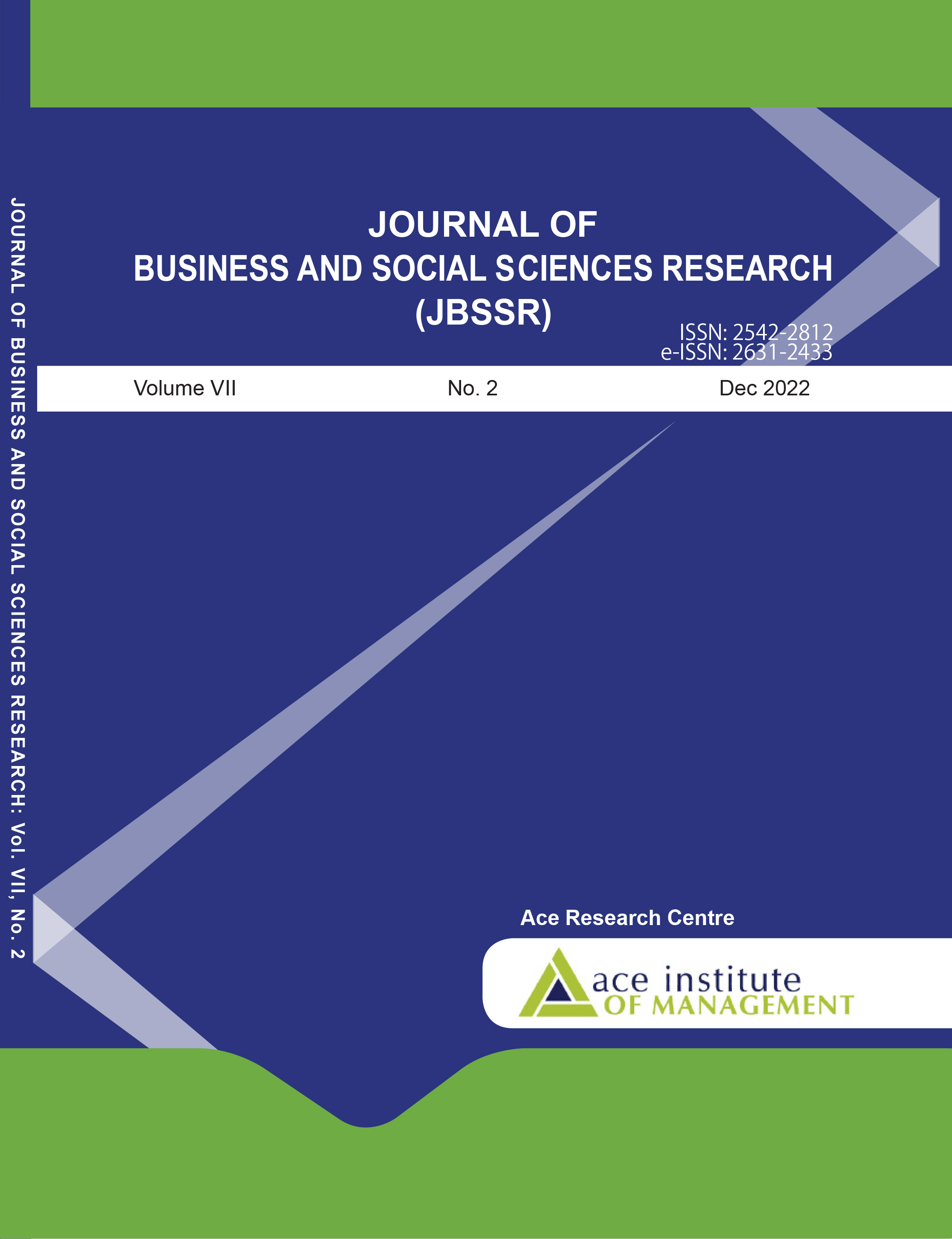Macroeconomic Determinants and Development of Banking Industry in Nepal
DOI:
https://doi.org/10.3126/jbssr.v7i2.51488Keywords:
ARDL approach, development of banking industry, macroeconomic variablesAbstract
This study aims to examine the macroeconomic determinants that have influenced the development of the banking sector in Nepal by using the ARDL approach technique with economic time series data over the period 1995 to 2020. The research study applied the ARDL approach for a small number of observations to avoid the spurious regression issue that plagues the creation of modern time series data. The research study used bound test co-integration analysis to determine the long-run equilibrium association between the macroeconomic determinants and the development of banking sector industry. The arithmetic average of the normalised values for banking efficiency, banking depth, and banking stability is used to measure the development of the banking industry. The research study found that per capita GDP and remittances have a positive and significant impact on the development of the banking industry. Additionally, the development of the banking industry was explained by government expenditure and stock market capitalisation. However, the research study reveals that the development of the banking industry is negatively impacted by trade openness and inflation in Nepal.
Downloads
Downloads
Published
How to Cite
Issue
Section
License
© JBSSR/AIM
Authors are required to transfer their Copyright to the Journal of Business and Social Sciences Research.




